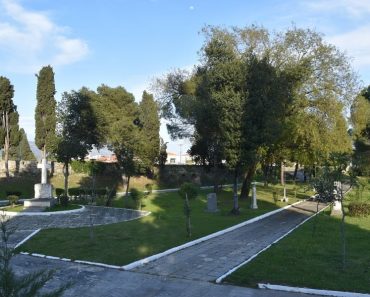We humans love a good timeline. It keeps museums tidy, textbooks slim, and trivia-night champs smug. Then a 23,000-year-old stone wall in central Greece strolls in, kicks over the neat stack, and asks us to start the story again from page one. We are talking about Cave of Theopetra in Thessaly’s Meteora, a region already famous for its gravity-defying monasteries which is now vying for the title Birthplace of Architecture.
Back in 2010, archaeologists squeezed through the yawning limestone mouth of Theopetra and found something odd: a low drystone barrier sealing roughly two-thirds of the entrance. No ornate carvings, no buried treasure, just an Ice-Age draft excluder built by plain folks determined to keep their cave warm when mammoths wandered by.
Using a technique called Optically-Stimulated Luminescence (OSL), researchers zapped quartz grains from the wall with laser light and dated the last moment the stones basked in sunshine. The reading came back around 23,000 years before present—deep in the Last Glacial Maximum. Long before farming, long before pyramids, and long before anyone coined the word ‘ancient’.
Quick-fire fact sheet
- What’s the structure? A snug drystone wall, knee-high in places, wedged between cave walls to block icy winds.
- How old is old? Roughly 21–24 millennia, average pinned at 23,000 BP by multiple OSL tests.
- Who built it? Anatomically modern hunter-gatherers using nothing fancier than stacked limestone chunks and persistence.
- Where exactly? Theopetra Cave, perched on a limestone hill below Meteora’s craggy pillars, a four-hour drive northwest of Athens.
Let’s put that in perspective: the much-celebrated Göbekli Tepe temple complex in Turkey clocks in at 11,600 years. Stonehenge, a sprightly 5,000. Khufu’s pyramid? A mere 4,500. By those standards, the Theopetra wall is practically Jurassic Park (minus the angry raptors).
How do you date a wall that can’t swipe right?
Radiocarbon can’t measure plain stone, so scientists turned to OSL, a method that treats quartz grains like cosmic hourglasses. When sunlight hits them, electrons reset to zero; bury them away from light, and a timer starts. In the lab, trigger the electrons with lasers, read the trapped energy, and voilà—an age stamp.
# For decades, archaeologists pictured Upper Paleolithic Europeans as nomads shuffling after herds, ducking into caves only for sleep. Theopetra’s wall says otherwise: these people engineered micro-climates to survive frigid winters and maybe store food in a calmer vestibule.
It also hands researchers a rock-solid timestamp amid the fuzzier chaos of late-Ice-Age Europe. Everything found deeper inside the cave—stone tools, charred plants, maybe bits of DNA—now anchors to a fixed calendar date, letting scientists sync cultural changes across the entire Mediterranean.
What anthropologists have to say about the discovery
Dr. Katerina Douka, a specialist in Ice-Age Europe, laughs when asked if the discovery ruins her lecture slides: “It forces everyone to admit comfort engineering didn’t pop up with farming—it began in the depths of an Ice-Age freeze.”
Her colleague, geoarchaeologist Ioannis Liritzis, adds, “Humans didn’t wait for bronze tools or city planners. They saw a problem—cold wind—and solved it with the rocks at their feet. It’s the earliest do-it-yourself weekend project we’ve got evidence for.”
If you are intrigued by this humankind marvel, you can even visit the cave vicinity. From Athens, hop a train or drive to Kalambaka, gateway to Meteora’s sky-clinging monasteries. The cave itself is usually closed for conservation, but the adjacent visitor center displays a scale model and interactive OSL exhibit.
So next time you are touring the Old Continent and take a week in the Mediterranean, make sure to drop by Athens, specially if you like archeology. There’s officially nothing more old-school than Teopetra cave, after all!







